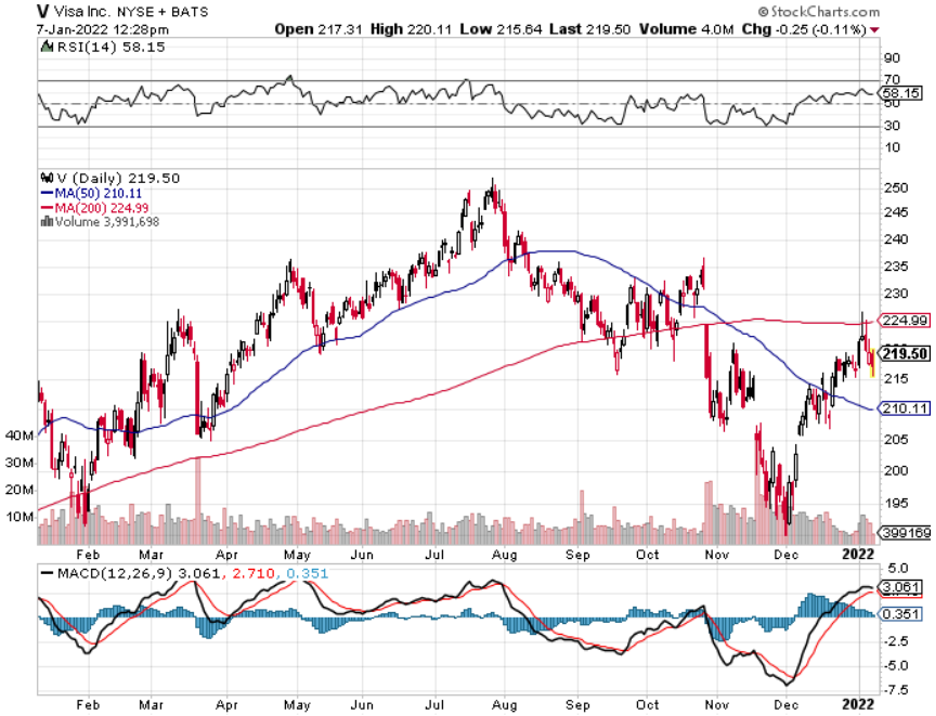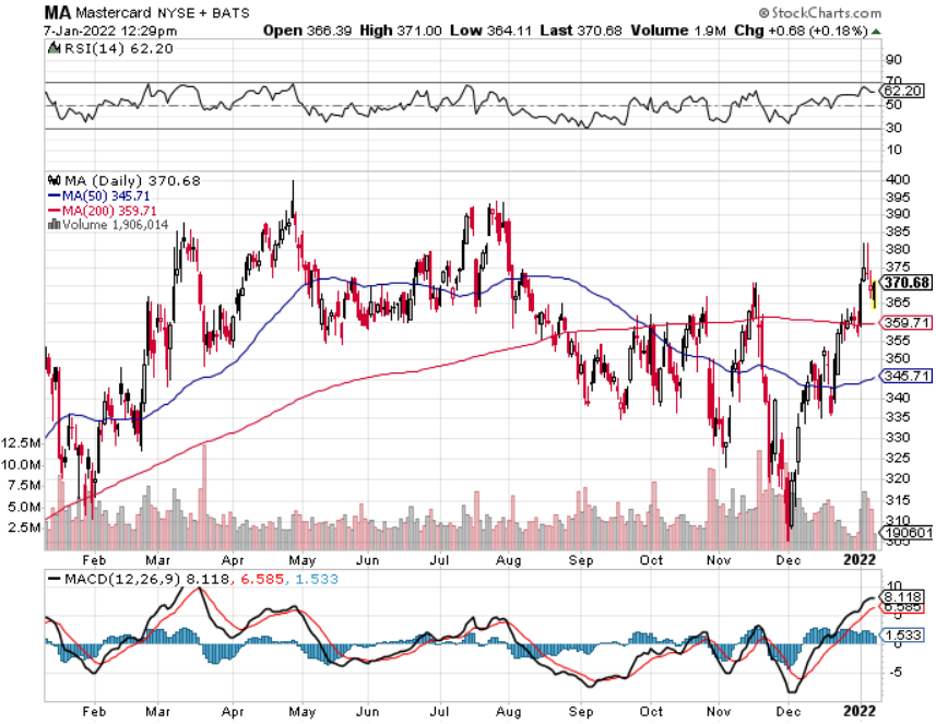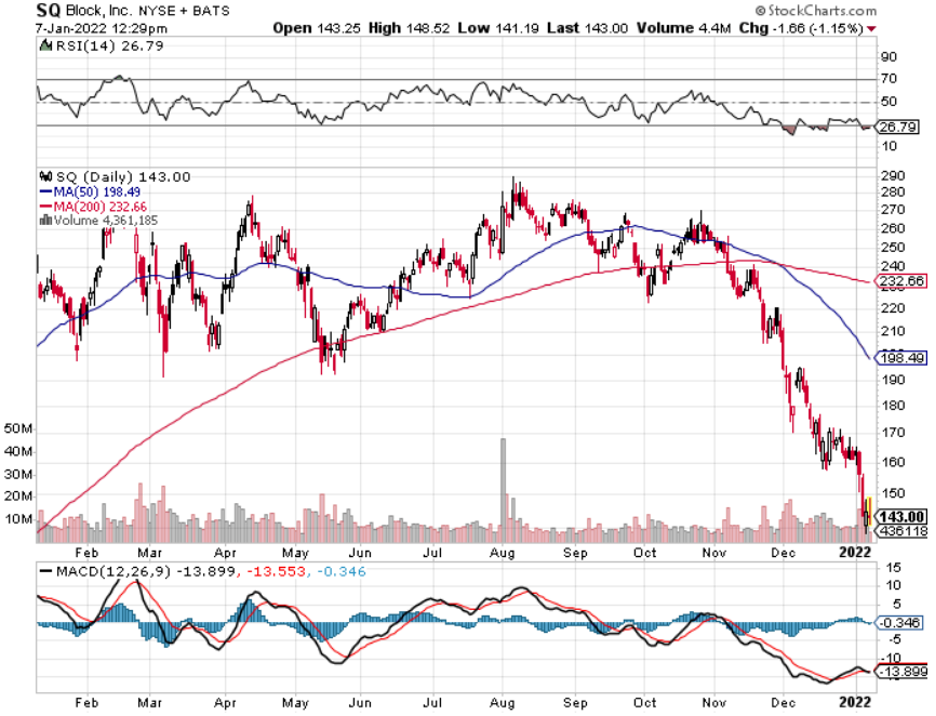Visa and Mastercard’s card networks are a relic of the past, not in terms of reach or footprint, but the technology of it.
This will cost their stock price and we are already seeing it play out in the market.
The canary in the coal mine was fintech players Square (SQ) and PayPal (PYPL) whose share prices were pummeled at the back end of last year.
PYPL is down 40% from its 2021 peak and SQ experienced a similar 42% drop.
This fierce competition and the crowded marketplace have investors paying less of a premium than ever before.
In a tightening rate environment, it’s clear the wolves are out for more flesh and the contagion will spread to those further up the food chain.
Fintech business models aren’t as robust or foundational as the bulwarks of MA and V, but questions must be asked if small businesses aren’t willing to pay an extra 2% on sales for outdated technology.
The fintech space has moved a long way in a short amount of time causing investors to be concerned about secular growth sustainability.
Among them are concerns that consumers are shifting to debit, away from higher-margin credit cards.
Consumers are also using more alternative payment methods that may bypass the card networks, including “buy now pay later” services offered by companies like Klarna, Afterpay (AFTPY), and Affirm (AFRM).
Visa has also come under pressure from a recent announcement by Amazon.com (AMZN) that next year it will stop accepting Visa-branded credit cards issued in the United Kingdom and this could be the beginning of a narrowing of Visas’ moat that could trigger a domino effect in other rich western countries.
The bulls would say that the stocks could undergo a reversal if the Omicron variant is not as bad as initially thought creating a tsunami of consumer spending massaging the bottom line for Visa and Mastercard.
But it’s looking more like V and MA are the victims of tightening travel restrictions around the globe and elevated positive cases that are immobilizing consumers.
The big card networks rely heavily on revenues related to cross-border travel as consumers and businesses use their cards for airfare, Airbnb’s, and Ubers, as well as duty-free gifts in foreign countries.
Multiples may need to come down if the Omicron variant puts the shackles on travel as countries reimpose bans or quarantine rules.
Investors had been counting on a recovery in cross-border travel to boost revenues for the card networks. This is definitely a kick in the nuts after initially seeing momentum as countries in general trended to loosening restrictions.
International transactions brought in $1.9 billion, or 21%, of Visa’s $8.9 billion in revenues for the 2021 fourth quarter.
The segment is highly profitable due to steep transaction and foreign-exchange fees. Cross-border margins come in around 69%, contributing significantly to Visa’s overall earnings per share.
The Christmas season has been confronted by a bevy of new restrictions as many places consider other measures to curb the spread of the Omicron variant.
Ultimately, even if MA and V can get positive reinforcement from increased short-term travel which seems unlikely, alternative business models are breathing down their neck as the technology of money has advanced.
The “buy now, pay later” phenomenon, although risky, is a rapid gut punch to the incumbents.
Then consider there is speculative technology like Bitcoin out there that bypasses these dinosaur networks altogether.
I believe 2022 is the year that MA and V get exposed as a luxury in a frugal world where small businesses can’t afford to give away 2% of revenue.
There’s too much money being invested into the technology of money for small businesses to reach for MA and V’s network.
Even open banking and digital networks can really dent the traditional payment networks.
Basically, I believe these companies have hit the high-water mark, and the likes of Zelle and Venmo will start to put pressure on these high fees.
Places like China don’t even use them by bypassing them through digital wallets like Wechat pay and Alipay.
Pie shrinkage and revenue decelerate — I believe this is one of the seminal trends we will see in fintech in 2022.






